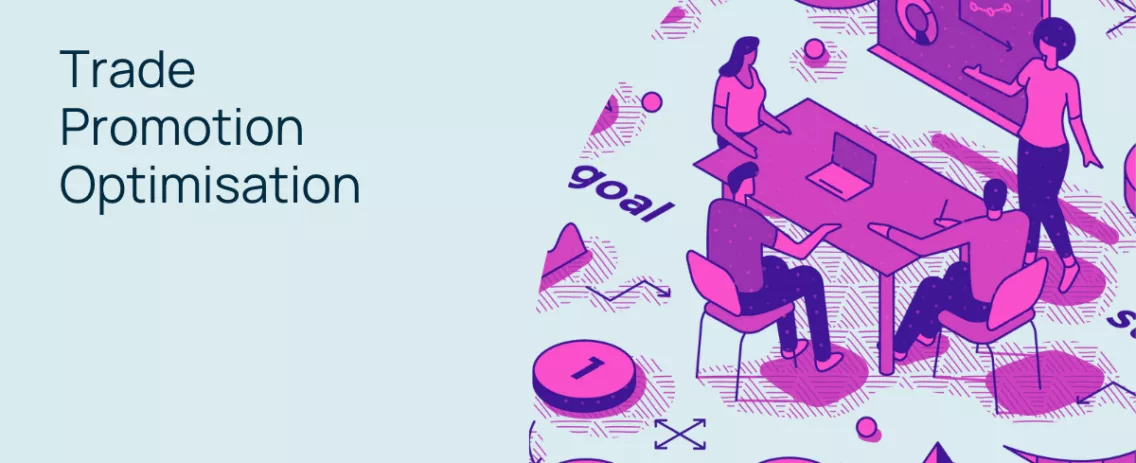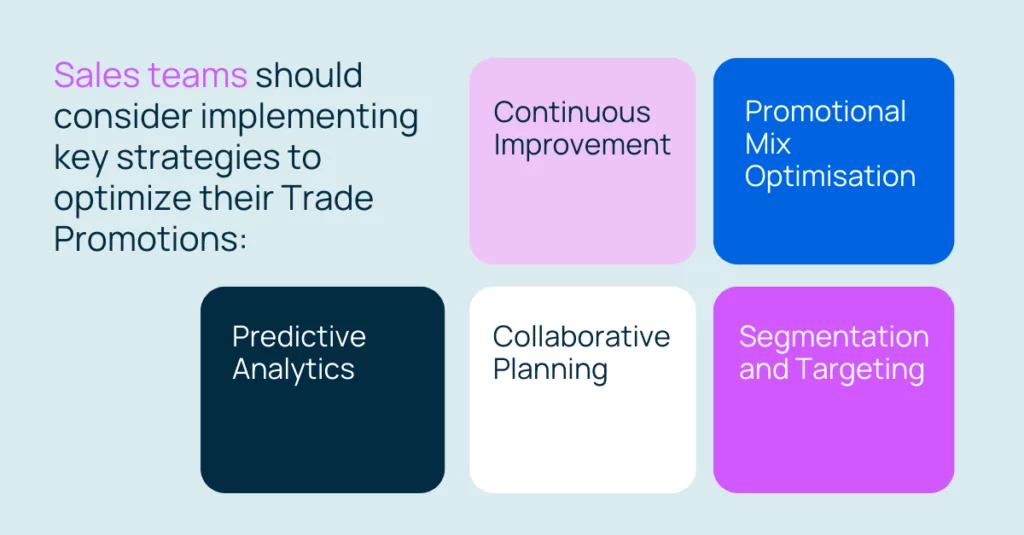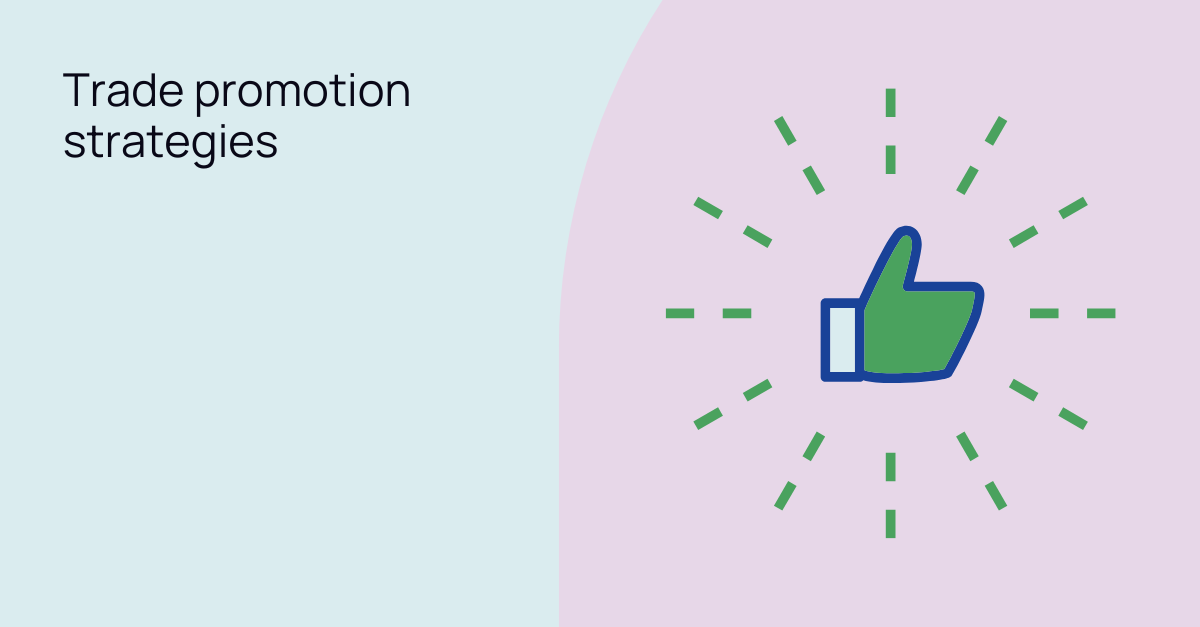
Trade Promotion Optimization: Driving success in the CPG industry
Trade Promotion Optimization (TPO) offers immense potential for consumer-packaged goods (CPG) companies. Through pre and post-evaluation using available actual data such as ex-factory or sell-out data and advanced analytics tools, sales teams can unlock opportunities to drive sales growth, improve profitability, and foster collaboration with retailers.
However, navigating the TPO landscape requires a deep understanding of the discipline’s nuances and the common challenges faced by sales teams. In this blog article, we will therefore delve into the world of trade promotion optimization. We’ll not only explore the key differences between TPO and Trade Promotion Management (TPM), and address the challenges faced by sales teams. But we’ll also provide valuable insights and strategies for success in the CPG industry.
Understanding trade promotion optimization
Trade promotion optimization plays a pivotal role in driving sales and revenue for CPG companies. It involves strategic planning and execution of promotions to maximize results. The key objectives of TPO include maximizing promotional return on investment (ROI), improving trade spend efficiency and fostering collaboration with retailers. By adopting trade promotion optimization strategies, CPG companies can enhance their competitive edge and achieve sustainable growth.

Difference between TPO and TPM
TPO and TPM may sound similar, but they are distinct disciplines, each with their own approach and scope.
TPM primarily focuses on the operational aspects of planning and executing promotions. It involves activities such as budget allocation, promotional planning, and coordination, both with internal teams—such as demand, category management, and finance—and with external partners, particularly retailers.
Trade Promotion Optimization (TPO) takes a more strategic and data-driven approach. It emphasizes the analysis of historical data, consumer insights, and market trends to optimize trade promotion strategies. TPO leverages advanced analytics tools to uncover patterns, identify opportunities, and support informed decisions. This will support you to maximize promotional effectiveness and drive better results. By embracing TPO, sales teams can elevate their trade promotion strategies to a whole new level of success.
The challenges sales teams face
Inadequate data analysis is a common challenge for sales teams in trade promotion optimization. There are commonly two causes. Firstly, not all data are available to everyone. Secondly, the integration of different data sources is labor intensive and is therefore only done on an ad-hoc basis. But without comprehensive and accurate data analysis, it is difficult to understand the impact of past promotions, identify trends, or make informed decisions for future strategies.
A lack of accurate insights also makes it harder to understand consumer behavior, preferences, and market dynamics. This makes it challenging to target promotions effectively. Limited collaboration with retailers compounds the problem. Because a lack of alignment and information sharing can lead to suboptimal promotion planning and execution. Moreover, evaluating promotional performance is difficult without proper monitoring of mechanisms and post-promotion analysis. This means you’re not able to measure success and identify areas for improvement. And it’s the latter that is a key driver of future success. Structural reviews of past promotions should be informing action on future promotion plans.
Overcoming these challenges requires a focus on data-driven decision-making, enhanced collaboration, and the adoption of robust evaluation processes to boost the effectiveness of trade promotions.
Key aspects of trade promotion optimization
Data analysis is the bedrock of successful TPO. By leveraging advanced analytics tools and techniques, sales teams can gain valuable insights from multiple data sources. These include ex-factory sales data and in-market sources such as Nielsen, IRI, syndicated data, EPoS, etc. They can also encompass promotional activity data, pricing data, and consumer insights. It is even possible to add qualitative data, such as the outing in the retailer leaflet or secondary placement. Structurally reviewing these data and transforming them into predictive dimensions sets the scene for informed decision-making. And it provides the ability to fine-tune promotional strategies for maximum impact.
Effective execution and evaluation play critical roles in TPO. By planning promotions meticulously, setting clear timelines, and implementing monitoring mechanisms, sales teams can ensure seamless execution. Post-promotion analysis on the other hand allows for performance measurement, identification of improvement areas, and the ability to make data-driven adjustments for future promotions. Technology and automation allow execution and evaluation processes to be streamlined, improving efficiency and effectiveness.
Main TPO strategies

There are several key strategies sales teams should consider when optimizing their trade promotion activities.
Predictive analytics: Leverage predictive analytics models to forecast the impact of trade promotions on sales, market share, and profitability. This will enable proactive decision-making and the ability to optimize promotion plans before implementation.
Continuous improvement: Implement a culture of continuous improvement by regularly evaluating promotion performance, learning from insights, and adapting strategies accordingly. This iterative approach will ensure ongoing optimization and better results over time.
Promotional mix optimization: Optimize the allocation of trade spend across different promotional activities, such as price discounts, product bundles, and marketing campaigns. Continuously evaluate and adjust the promotional mix to maximise ROI.
Collaborative planning: Foster collaboration with retailers by sharing data and insights. Jointly develop promotion strategies that align with both parties’ objectives, ensuring mutually beneficial outcomes.
Segmentation and targeting: Identify and prioritize consumer segments based on factors like profitability, purchase behavior, and market potential. Tailor promotions to resonate with the specific needs and preferences of each segment.
Choosing the right software for trade promotion optimization in CPG
The increasing complexity of trade promotion optimization (TPO) in the CPG industry means choosing the right tool is crucial to streamlining processes, gaining actionable insights, and escalating trade promotional effectiveness. Here are the key factors to consider when selecting a TPO solution:
Data integration and analysis: Choose a solution that integrates with multiple data sources without requiring manual effort. And that offers robust analytics capabilities for data-driven decision-making.
Advanced forecasting and predictive analytics: Search for a solution that provides accurate forecasts and predictive insights to optimize promotion strategies.
Scenario planning and optimization: Select a solution that allows to simulate different promotion scenarios and assess their impact on key metrics.
Retailer collaboration and joint business planning: Does your proposed solution allow the inclusion of in-market metrics, such as retailer price and profitability? This will enable better engagement with retailers and opens the door for insight sharing.
Configuration and flexibility: Look for the ability to combine global best practices with configuration to support your specific business needs, allowing you to define custom metrics and reports.
User-friendly interface: Don’t forget that an intuitive interface will simplify complex processes for efficient execution and monitoring.
Scalability and integration: Whatever software you choose, be sure it can scale with your business growth and integrate with other systems like ERP or CRM.
The impact of trade promotion optimization in the CPG industry is undeniable. It transforms the playing field, offering remarkable opportunities for growth and success that were previously untapped. By understanding the importance of TPO, addressing challenges, leveraging data analysis and advanced analytics tools, and implementing key strategies, sales teams can maximize the effectiveness of their trade promotions.
Embracing trade promotion optimization not only drives sales growth and improves profitability but also fosters stronger collaboration with retailers. Take the opportunity to optimize trade promotions and stay ahead of the competition. Download our Trade Promotion Master brochure or book a demo to explore how our solutions can accelerate your trade promotion optimization journey today.

.png)

